Soda, Cola, and Our Radiated Tortoise Breeders
by Dennis M.
Soda is our male Radiated tortoise and is the eldest resident of the garden. We've had him since he was only 4 inches. He's now around 14 inches and more than 8 kilos. Of all the tortoises we've kept since 1999, Soda is the friendliest. He consistently approaches us to be petted. He will stand up high and stretch his head while being scratched. Nothing makes a tortoise owner happier than a tortoise that is healthy, friendly and active!
Cola is Soda's forever partner and the loving mother of our baby Rads. She is a big female Radiata measuring about 14.5 inches and 8.5 kilos. Despite her size, she is very gentle even with our baby tortoises. My vet described her as an old soul trapped in a tortoise's body. It was a perfect description!
Soda and Cola are both Radiated tortoises which are endemic to the country of Madagascar. The Radiated tortoise is one of the most attractive and sought-after tortoise species of all. They are classified as Critically Endangered by the IUCN and listed on CITES Appendix I because of poaching and destruction of their habitat. They are a long-lived species with a recorded lifespan of 188 years. They are also the largest of the species that have a star or radiating pattern on their carapace. Top of mind, based on experience and past research, here are the other starred species in the world: Indian Star (Geochelone elegans), Burmese Star (Geochelone platynota), Spider (Pyxis arachnoides), Flat-backed Spider (Pyxis planicauda), Pancake (Malacochersus tornieri), Geometric (Psammobates geometricus) and Tent tortoises (Psammobates tentorius). Scroll below for photos of our Radiated tortoises!
Latest hatchlings!
Date: May 27, 2017
So far, this batch has the yellowest one that we've hatched.
It usually takes 1-3 days for the tortoise hatchling to fully hatch out. But this time lapse video captures the entire process in 90 seconds, very interesting! This batch of eggs is special because unlike the first, we were also able to capture photos of the entire process from chalking, developing veins, pipping and to fully hatching. This clutch was laid on January 2017 and started to hatch on May 12, 2017. Our best one so far!
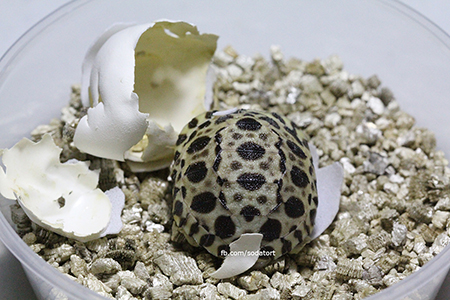
Our best one so far!
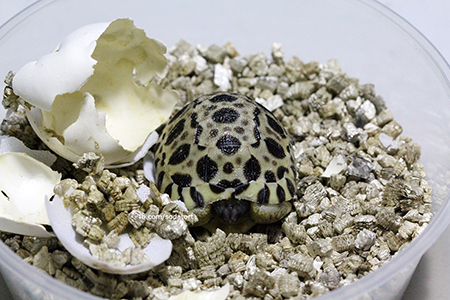
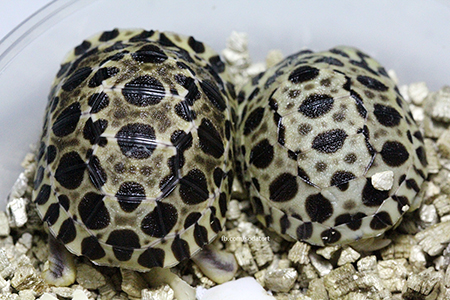
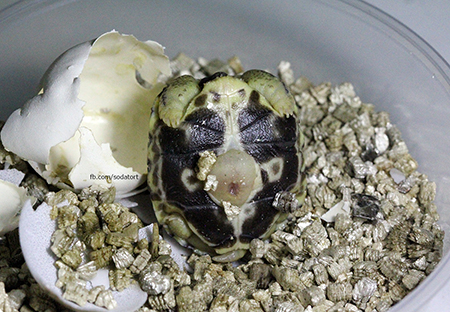
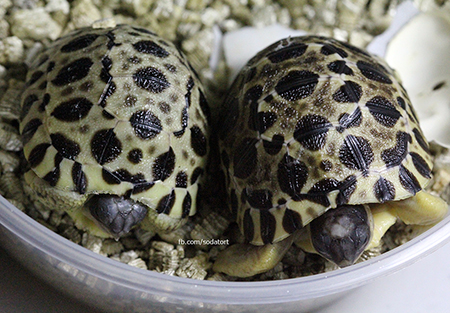
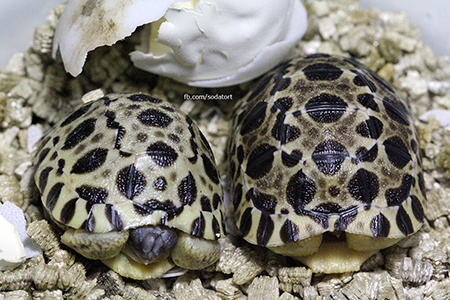
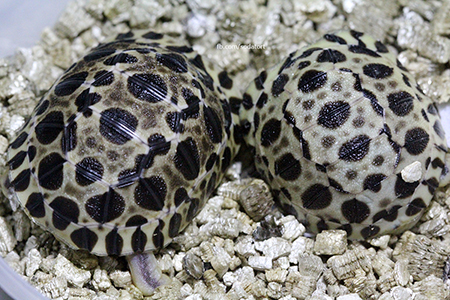
It would be interesting to see how this hatchling develops and grows
20-second time lapse video of this beauty!
Time Lapse Video of Our Third Hatchling!
Date: May 14, 2017
I was lucky to catch this one from pipping to hatching. The process usually takes 2-3 days but this video captures the entire experience in 90 seconds! Very interesting to watch!
Here are a few photos of Soda and Cola's third. This clutch was laid on January 2017 and started to hatch on May 12, 2017
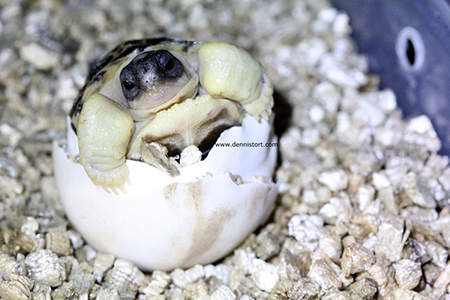
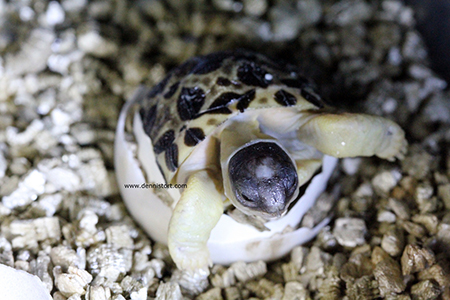
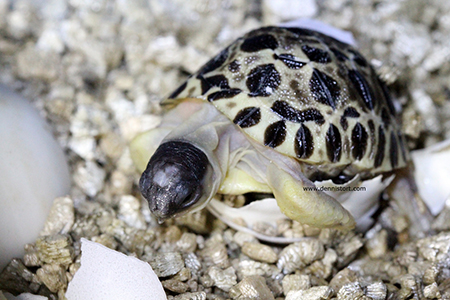
Pipping to hatching. 48 hours compressed to 90 seconds.
Radiated Tortoises Mating
Date: Feb 14, 2017
Their courtship always starts with the male Radiata chasing and circling the female. The male then tries to lift the female with his gular scute. Once the female shows even the slightest hint of submission, the male then mounts the female and begins humping. The humping is done with funny-sounding grunting noises produced by the male.
Mating Video. Turn up the volume to hear the male's grunts. Very interesting
Second Radiata Hatched Today!!
Date: Jan 20, 2017
We are happy to present to you our second Radiated tortoise hatchling! This is the same clutch as the first one, but nearly 3 weeks apart. This clutch of eggs were laid on August 10, 2016 for a total of 163 days, or 5 months and 10 days.
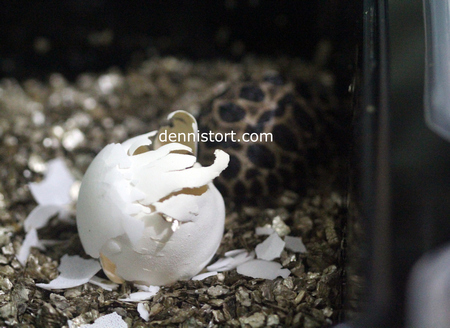
Found this today inside the incubator!
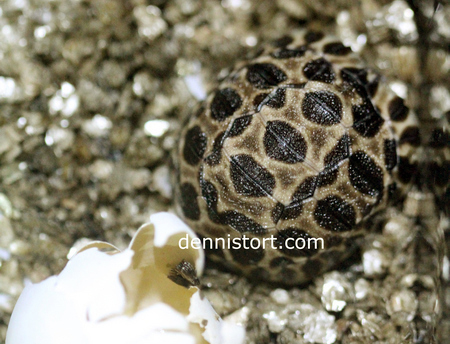
Must have hatched 2-3 days ago judging from the yolk sac. Seriously, most times I check everyday. But everytime I don't, that's when they hatch.
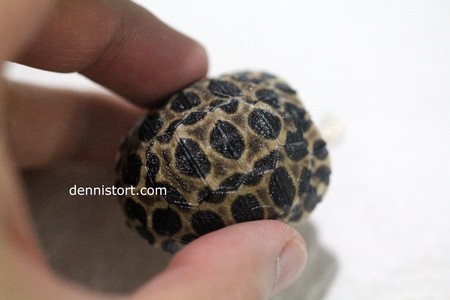
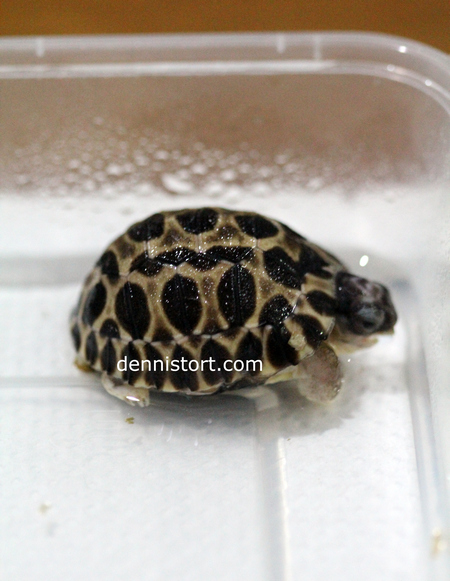
It looked weak at first, but suddenly started to show signs of life when soaked in lukewarm water
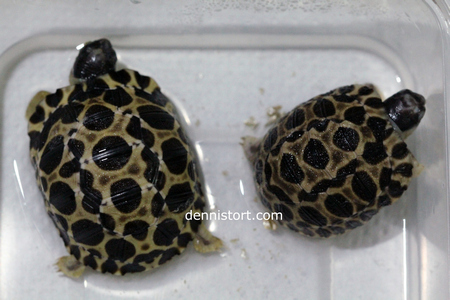
Our first and second. Hatched nearly 3 weeks apart!
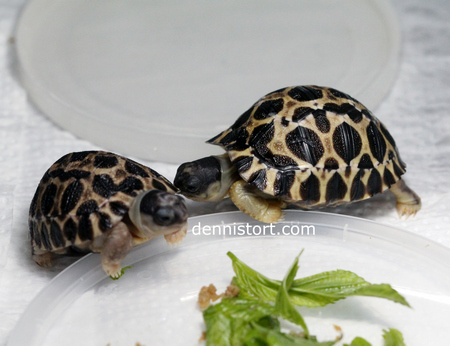
Cali, our first hatchling is very curious about its new housemate
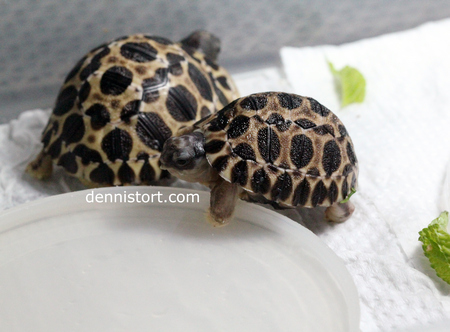
Very curious at Day 1
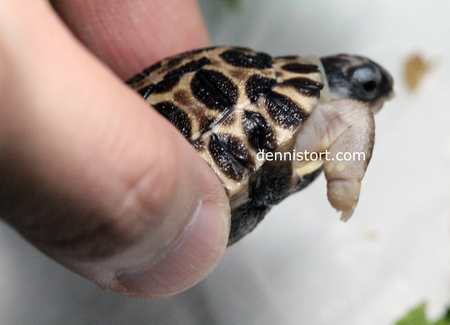
So small!
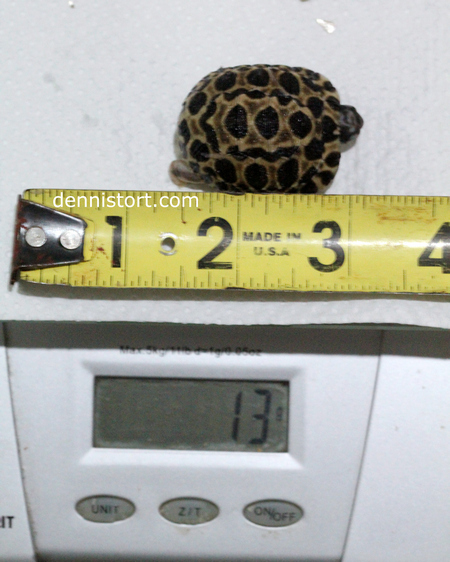
Less than 1.5 inches. Weighing only 13 grams!
Photos With The Parents! 18 Days Old
Date: Jan 16, 2017
Lovely photos of Cali and his/her parents, Soda and Cola, our proven Radiated tortoise pair!
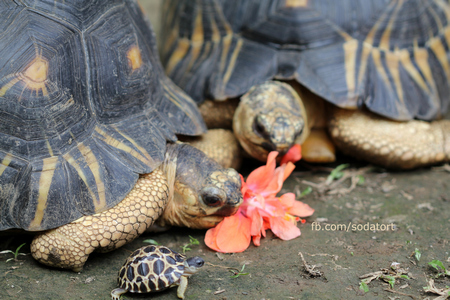
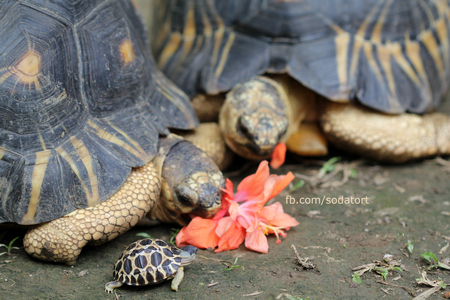
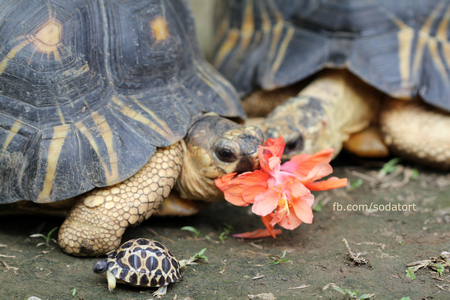
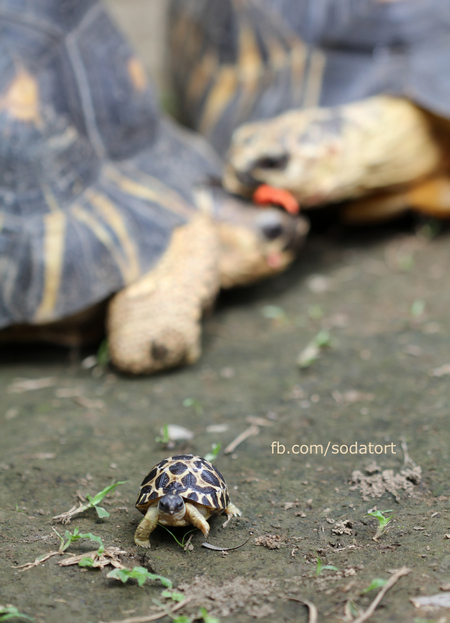
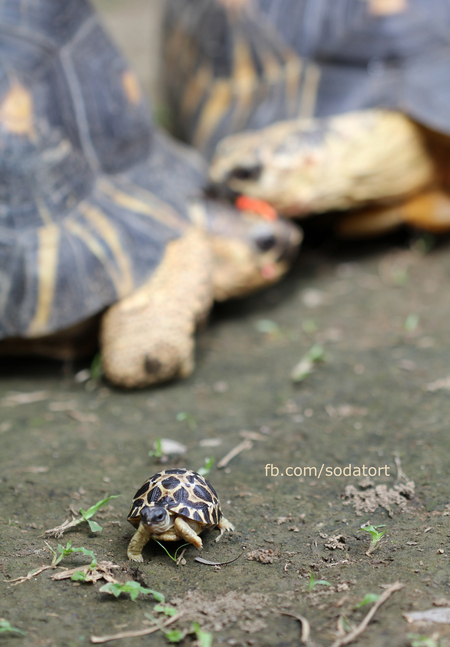
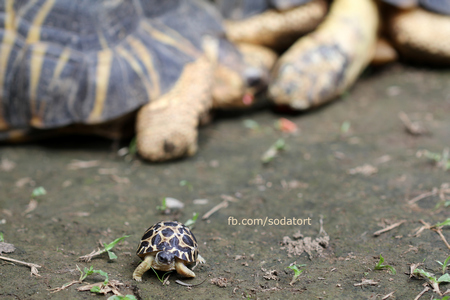
Cali can walk pretty fast for a tortoise hatchling!
We Named The Hatchling Radiata, Cali!
Date: Jan 8, 2017
Below are the latest pictures of Cali at 10 days old. He/She seems to be doing very well. Of course at this point, it is not possible to confirm the sex of Cali.
You can also see small white growth lines at the tip of each radiating pattern. We'll try to track his/her progress and post updated photos regularly.
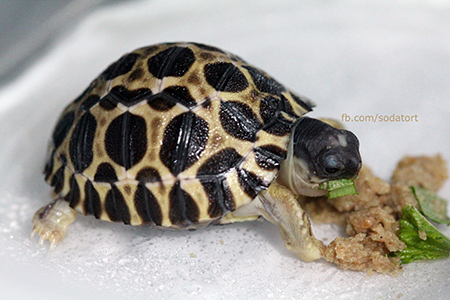
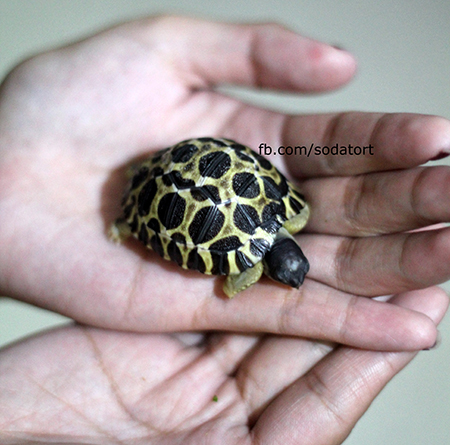
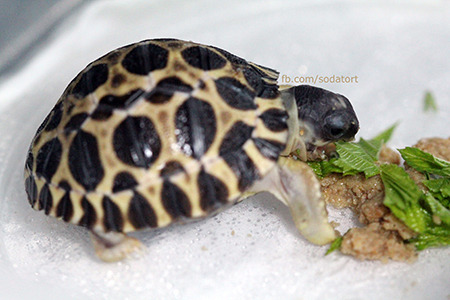
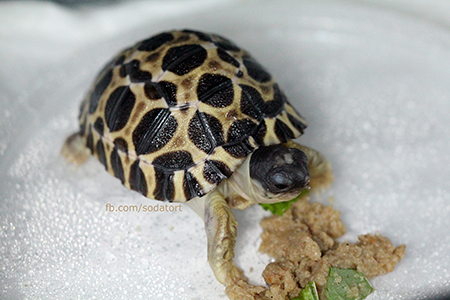
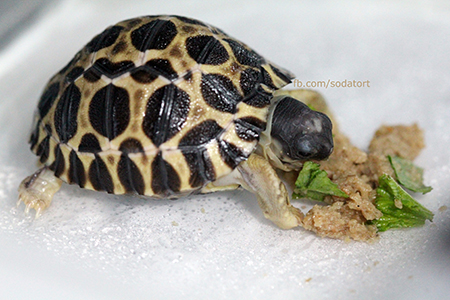
We finally produced a Radiated tortoise hatchling!!
Date: Dec 29, 2016
14 Years in the Making! After working with this species since 2002, hard work and perseverance finally paid off! This is possibly the first captive bred Radiated tortoise in the Philippines, or at least the first one fully documented online.
Congrats to Soda and Cola! 3 years of mating and laying finally bore fruit. I was convinced that Soda is infertile. I am glad to be proven wrong! Sorry, Soda!
Congrats to the SODATORT team: Dennis, overall lead. Lourdes my mom and her staff for operations. And to all those who became part of Soda's journey.
*Also posted on Soda's Instagram, Facebook and Youtube accounts
*DENR Registered
Here's a video of the hatchling's first steps:
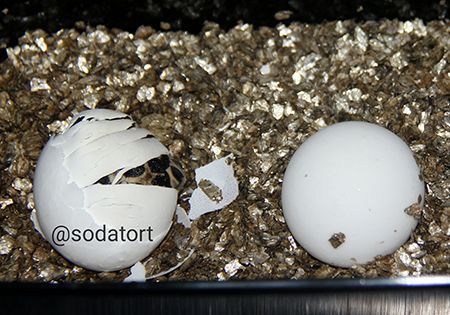
I saw this in the morning of December 29, 2016. It was unexpected because I was already convinced that all of the Radiata eggs are infertile. I just opened the incubator to check for Star tortoise eggs and I saw this! I could't believe it! I even thought it was already dead.
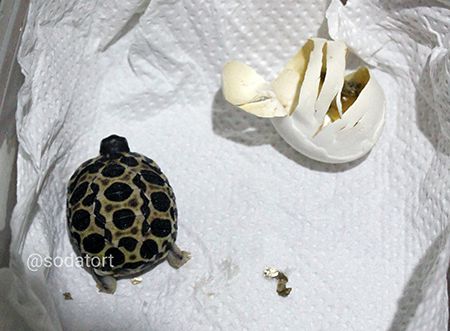
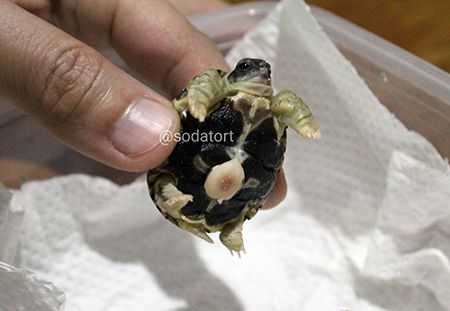
Its yolk sac was almost fully absorbed. The egg probably hatched out 1-2 days prior.
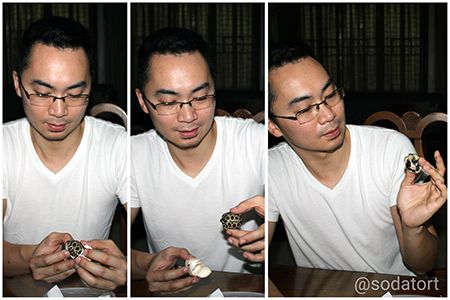
This is me helping the Radiata hatchling out of its egg. It did most of the work because the egg is fully broken. It was just tangled and couldn't break free.
Here's a video of the hatchlings first steps
Beautiful Day at Soda's Tortoise Garden
Date: Aug 10, 2016
Here are a few photos of Soda, doing his favorite pose. Also shown below are our other Radiated tortoises, Rootbeer, and Champagne, a true super high-yellow Radiated tortoise.
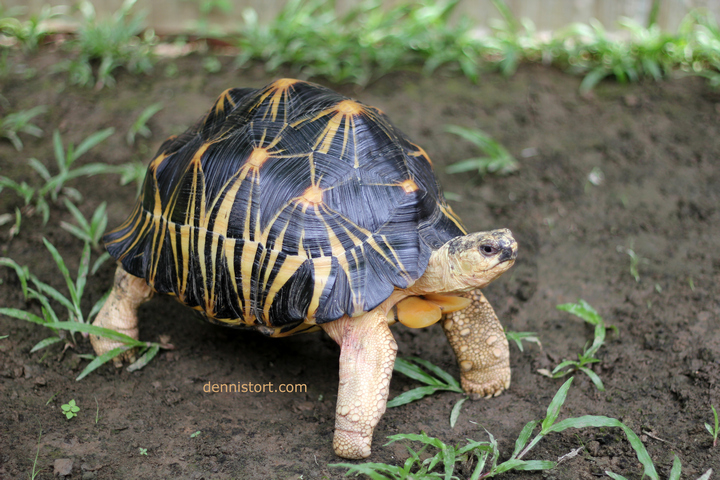
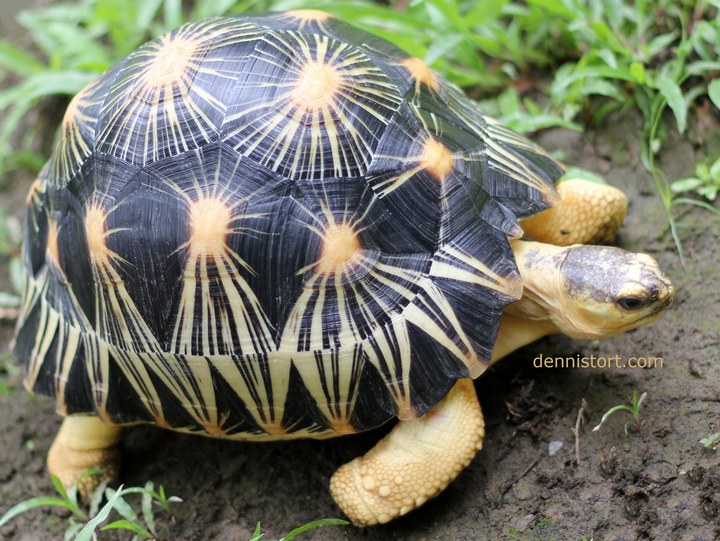
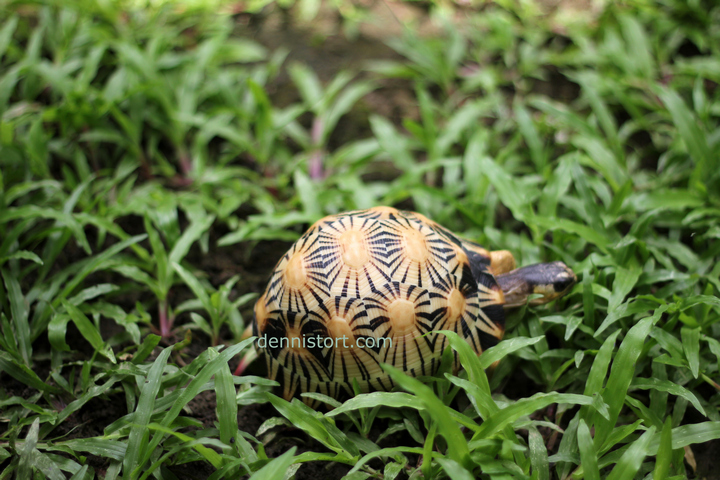
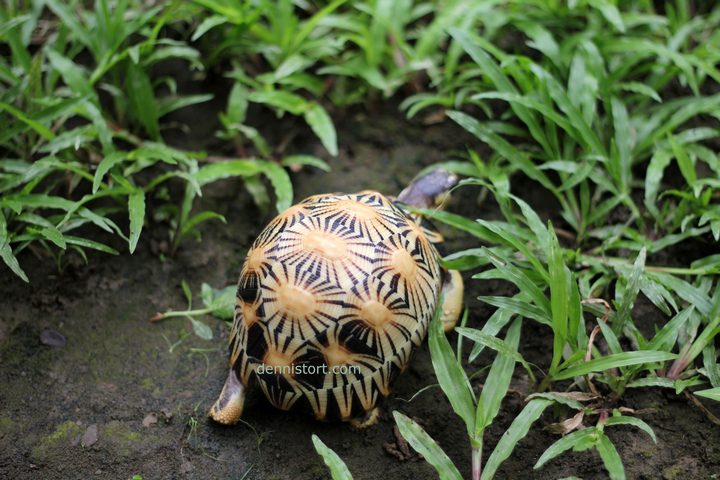
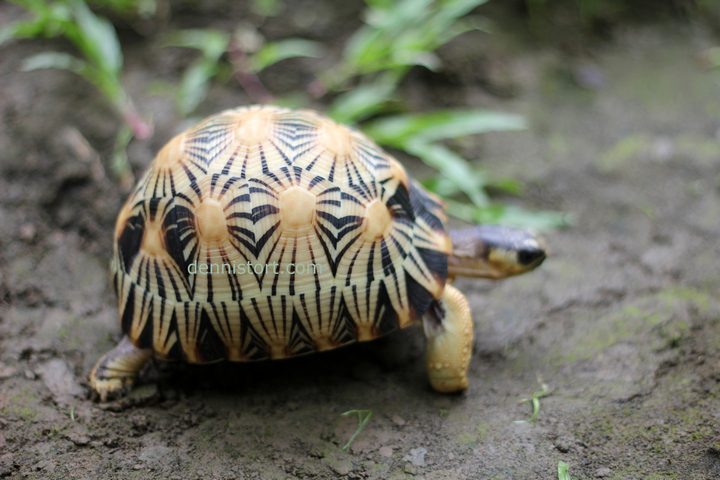
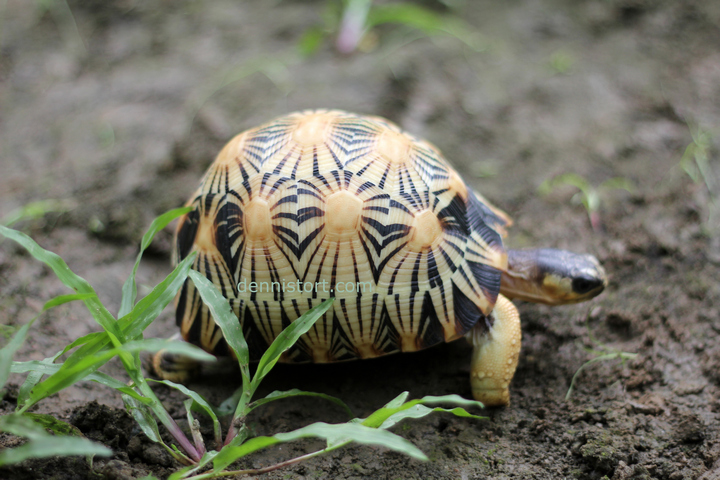
Soda and other Juvenile Radiated tortoises
Date: Jul 31, 2015
Here you can see the size difference between an adult male Radiated tortoise and juvenile Rads.
The small Rads think Sodas plastron is a good hiding place.
Soda and Cola sharing one of their favorites, Gumamela!
Soda's Favorite Activities
Date: Jul 21, 2015
Some of Soda's daily shenanigans!
Soda loves to be scratched on the head. He automatically stands up and stretches every time.
Juvenile Radiated tortoises
Date: Jun 1, 2015
Just sharing some videos of a few 4 to 5.5-inch Radiated tortoises.
Above video is Rootbeer, a very round and beautiful semi-high yellow Radiata
Enjoying their meal
Female Radiata Laying Eggs
Date: Apr 26, 2014
See more photos and videos on our Facebook page!
My male Radiated tortoise, Soda started showing interest in my female Radiata, Cola in December, 2013. They displayed the usual tortoise courtship process of smelling, chasing, ramming, lifting and finally mating. A few months later, Cola started laying eggs. It was exciting for me to see her lay eggs for the first time! She's been laying 3 to 6 eggs per clutch every 2 to 4 months ever since. Unfortunately, the eggs have always been infertile except for when we finally got a hatchling on December 29, 2016! Please see the section above. It was a very exciting moment!
Egg Laying
Cola laid her first ever clutch of 4 eggs on April 26, 2014. In our tortoise garden, she has 2 nesting sites to choose from and we have a third one that we keep moving around in case she gets tired of her current options.
You may also check out Soda and Cola's Facebook page by clicking HERE. Photos and videos are more up-to-date
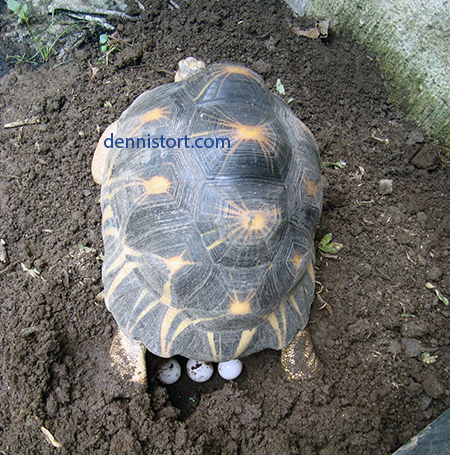
Egg laying video.
Close up video. You can see the egg slowly coming out of her tail, or cloaca to be exact.
Time-Lapse video of our female Radiata digging her nest. She laid 5 eggs after that.
Close-up
Date: Aug 12, 2011
Experimenting with a 100mm macro lense. I will try to post more photos.
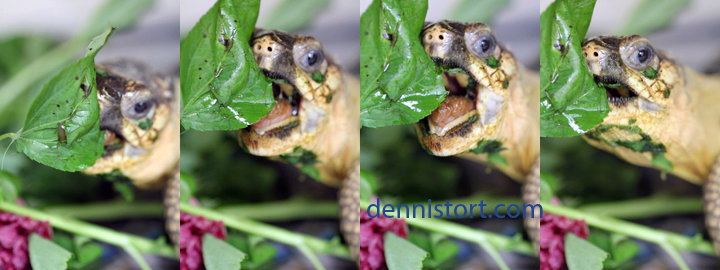
Shot with a Canon 100mm macro lens
Introducing Cola, Our Adult Female Radiated Tortoise
Date: Jun 10, 2010
Soda's forever partner! We look forward to breeding such a wonderful species in the future! Were hoping to produce Radiated babies with Soda and Cola!
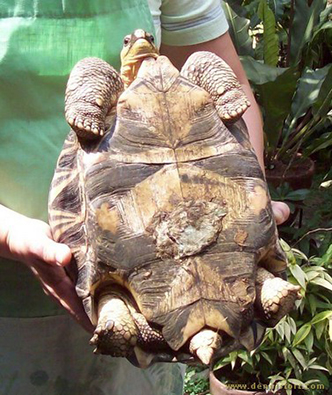
Female adult Radiated tortoise compared to a male. Notice Cola's tail (left) is much shorter than Soda's tail which curls and bends because of the length.
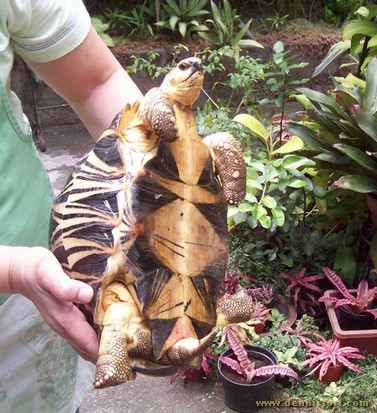
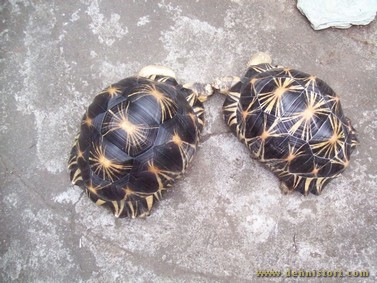
Cola and Soda Starting to Show Interest with Each Other. After cleaning and brushing the torts, Cold and Soda spent a lot of time in the backyard. Soda seems to be very excited and very interested!
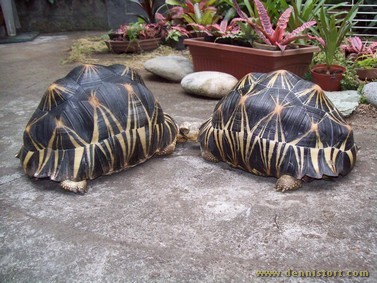
A lot of smelling
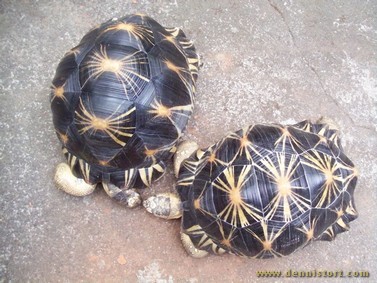
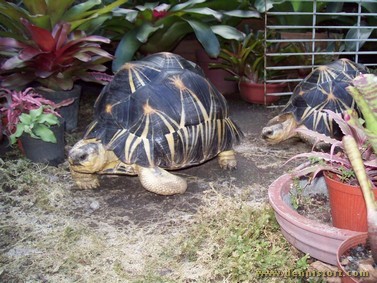
A little bit of chasing
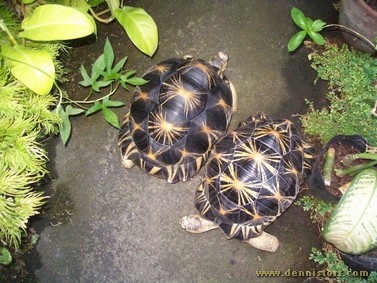
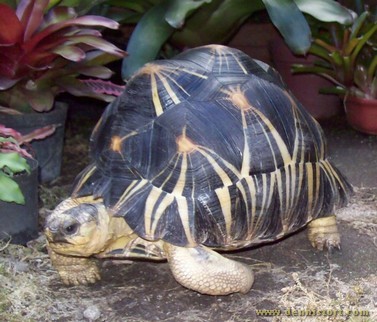
Cola exploring her new garden
Now and Then
Date: Mar 30, 2010
This is a comparison of Soda's picture taken on December 2006, December 2009, and February 2010. On the first photo, he can easily fit in the palm of my hand.

December 2006
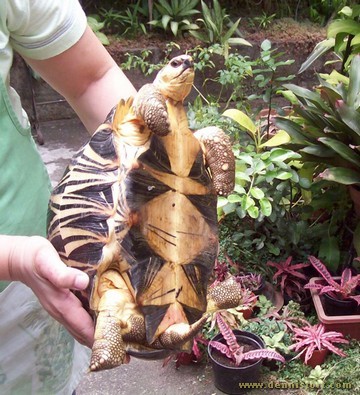
As of March 2010, Soda is around 11.5 inches.

October 2006
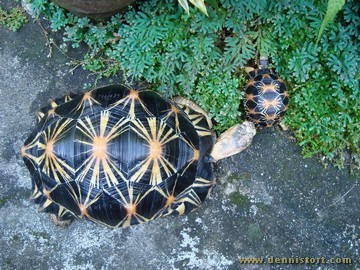
December 2009
Radiated Tortoise Compared to a Sulcata
Date: Mar 12, 2010
Below are photos of Soda, a Radiated tortoise compared to my Sulcata tortoise, Mocha.
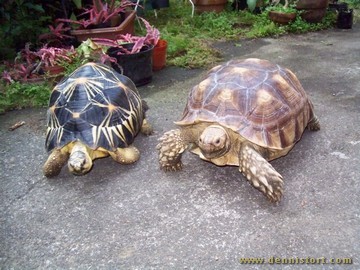
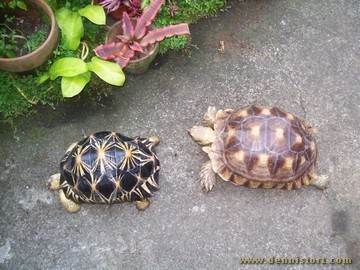
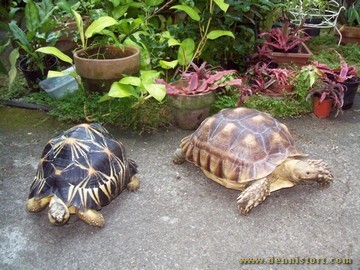
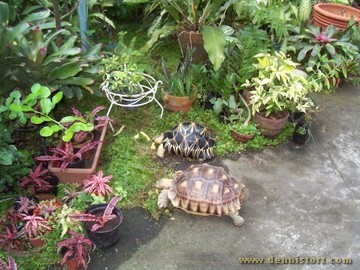
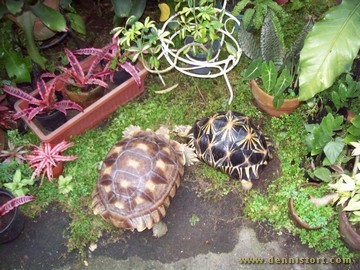
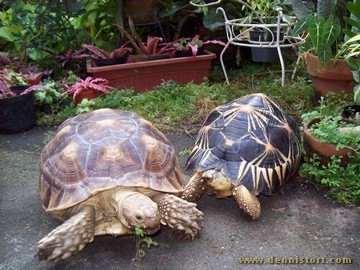
It's a Boy!!
Date: Mar 12, 2010
There are a number of ways to determine the sex of a tortoise (male has long tail and concave plastron). But until the male shows his male organ, one can never be 100% sure. On a sunny day of February 2010, during Soda's bath time, we confirmed that Soda is indeed he! This usually happens when Radiated tortoises are at least 10 inches long.
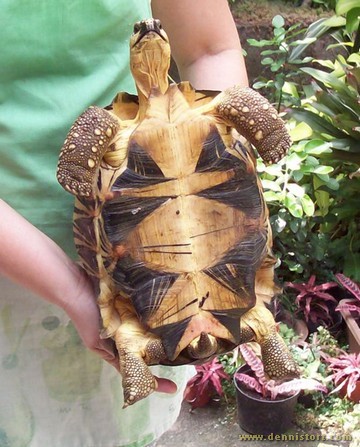
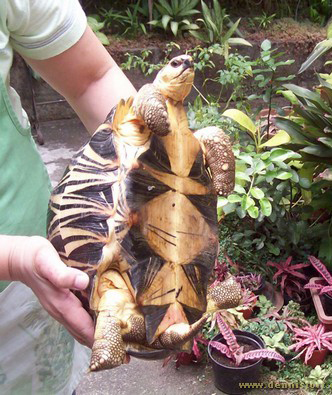
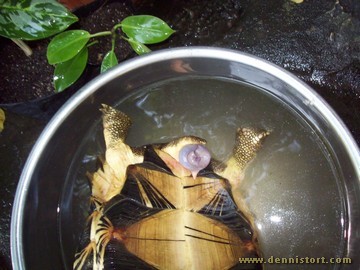
I feel slightly embarrassed for having to show Soda's male organ here. But I'm sure he wouldn't mind!
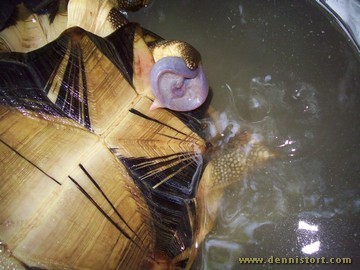
Definitely a male tortoise
Soda's Growth Through The Years
Date: Feb 8, 2010
I've compiled all top-view photos of Soda and included the month and year of each photo. Notice the white growth lines as they turn to yellow. From 4.25 inches on October 2006, Soda grew up to around 12 inches on February 2010.
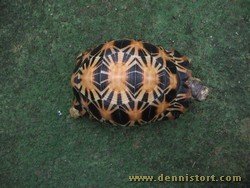

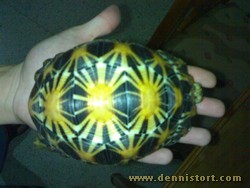
.jpg)
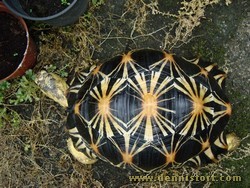
.jpg)
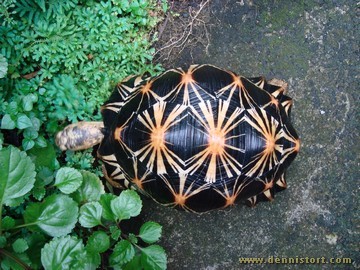
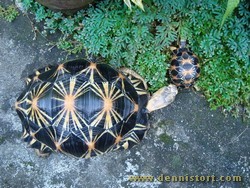
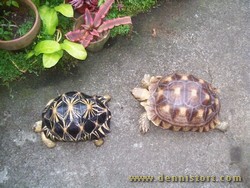
Radiated Tortoise Juvies
Date: Nov 11, 2009
Back in 2009, I also purchased four 4-inch Radiated tortoises. I didn't have them for long because they were part of an important trade that happened a few months later. Here are random photos of them walking around the backyard and a few more pictures of them eating.
Such beautiful and rare creatures!
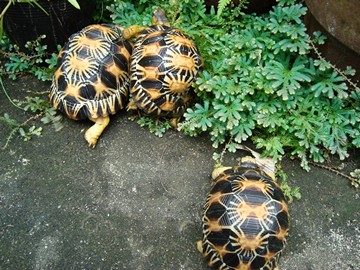
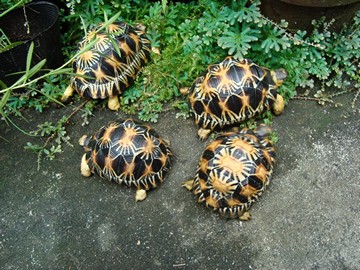
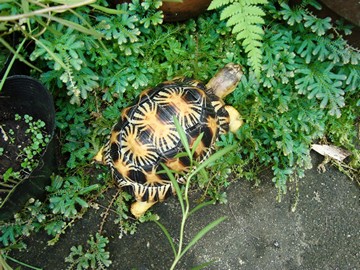
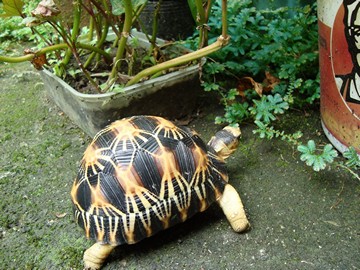
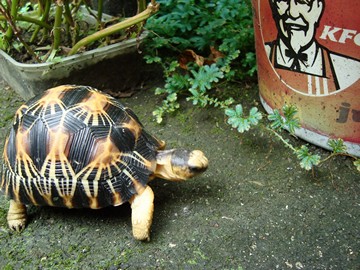
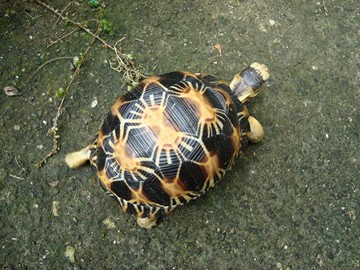
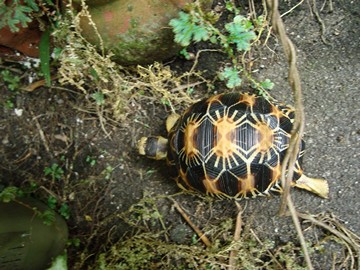
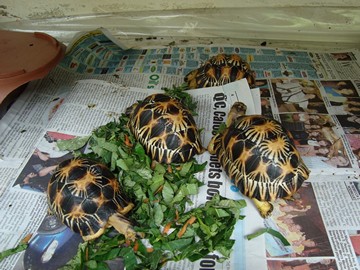
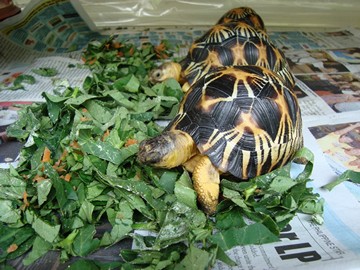
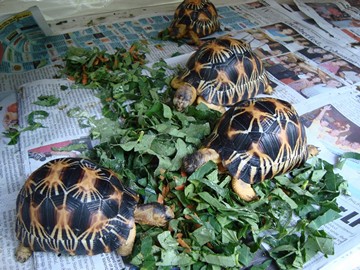
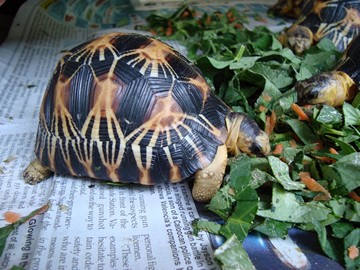
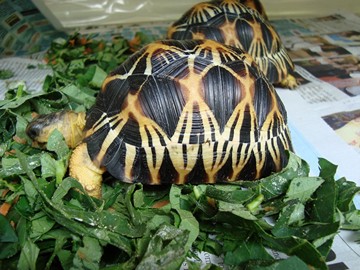
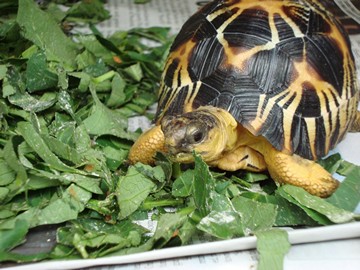
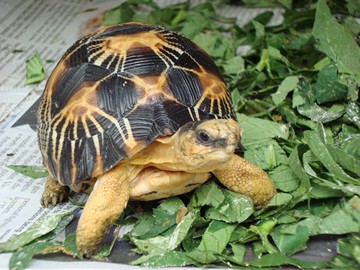
November 2009 Random Photos
Date: Nov 8, 2009
A few photos at the garden.
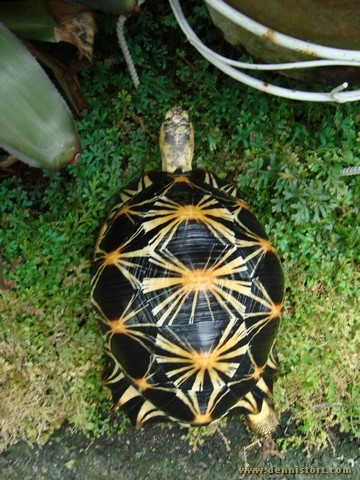
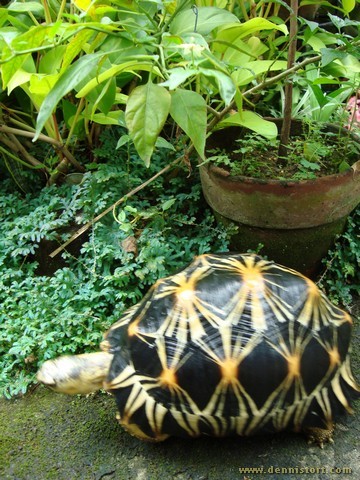
Strolling around the garden
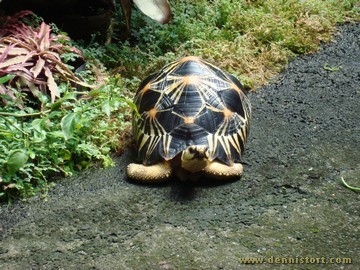
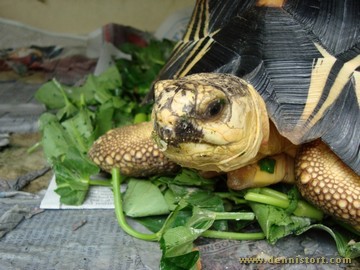
Relaxed and comfortable with his surroundings
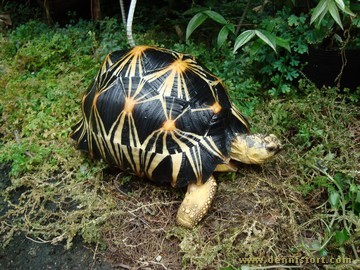
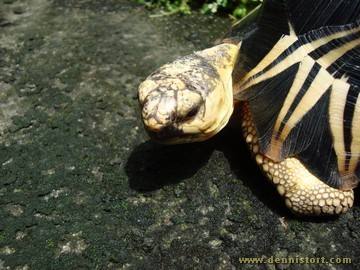
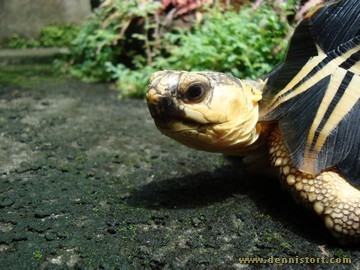
Close up. What a pretty face!
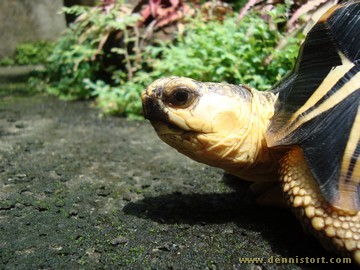
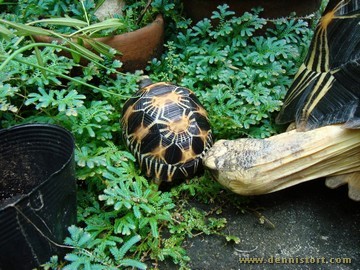
Tortoises love to smell each other especially when they see a new tortoise
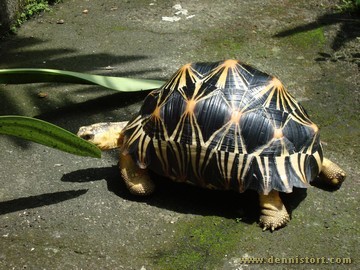
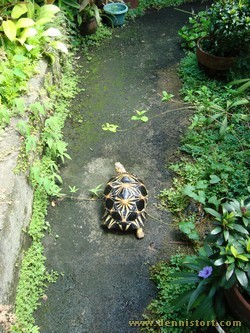
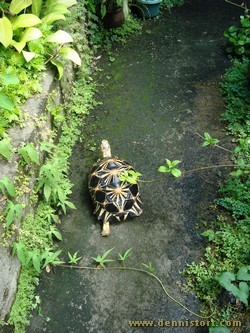
Soda exploring his surroundings
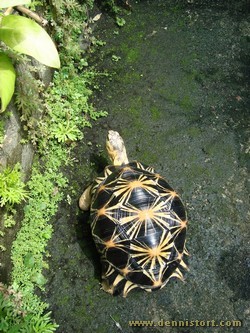
December 2008 Random Photos
Date: Dec 12, 2008
This is Soda, my Geochelone Radiata. Nothing makes an owner happier than a healthy tortoise with tons of personality! Soda is simply my favorite!
 - 360.jpg)
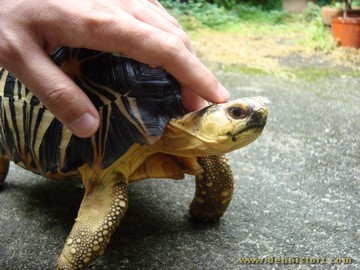
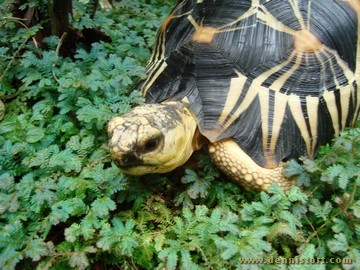
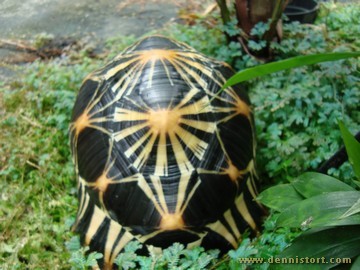
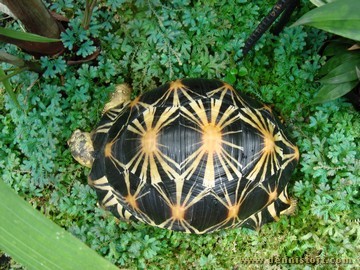
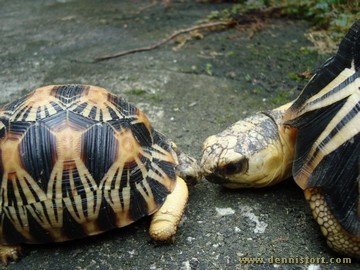
Old Photos of Soda taken at the yard
Date: Dec 8, 2006
Soda was around 4.25 inches at this time.






Soda With Other Tortoises
Date: Jun 25, 2006
Soda was still very small here. He was around 4 inches in 2006.

Soda with a male Indian Star tortoise. One can see the comparison between a Star and a Radiated tortoise. The star tortoise is almost fully grown while Soda was just starting to grow and would reach about 13-15 inches in length.
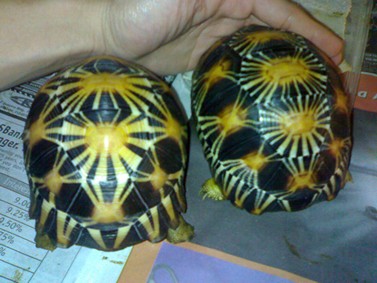
Radiated tortoises, Soda (left) and Coffee (right). The patterns are always unique for Radiated tortoises. Coffee, compared to Soda, has thinner lines radiating from the middle.
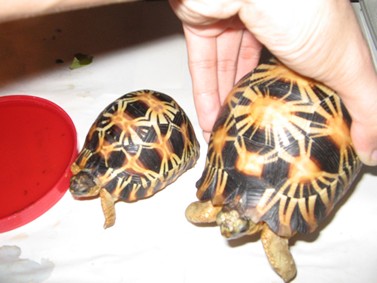
Below is Biscuit, a smaller Radiated tortoise. We had to return Biscuit to the seller due to immediate problems and would not eat within 3 days. I am so glad that Soda turned out very healthy. He is now more than a foot long, very active, and has great appetite.
About Us
Soda's Tortoise Garden is a private tortoise breeding facility that is accredited by DENR and BAI (Bureau of Animal Industry) located in Metro Manila, Philippines. We don't have a physical shop but you may coordinate with us via our Facebook page. Be sure to follow our page for our latest posts and stories. Learn More
Our first TV appearance at "Rise & Shine Pilipinas" by PTV 4.
Follow Us On Facebook
